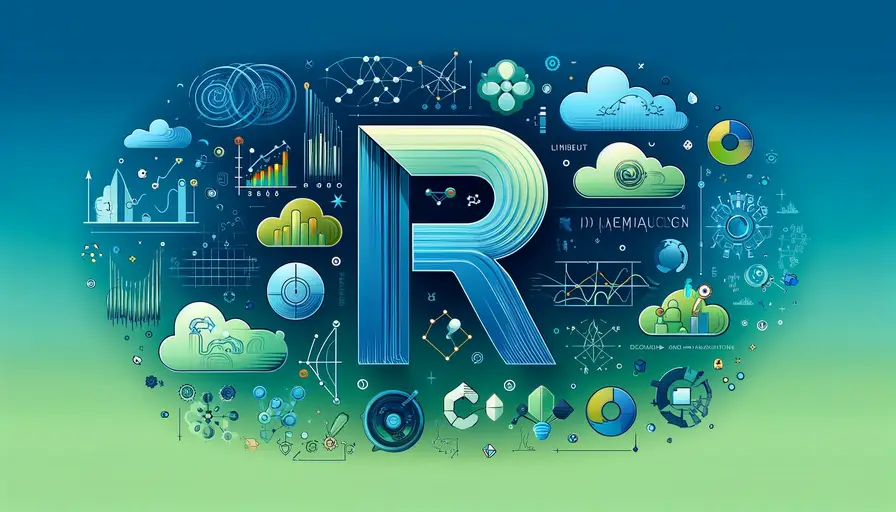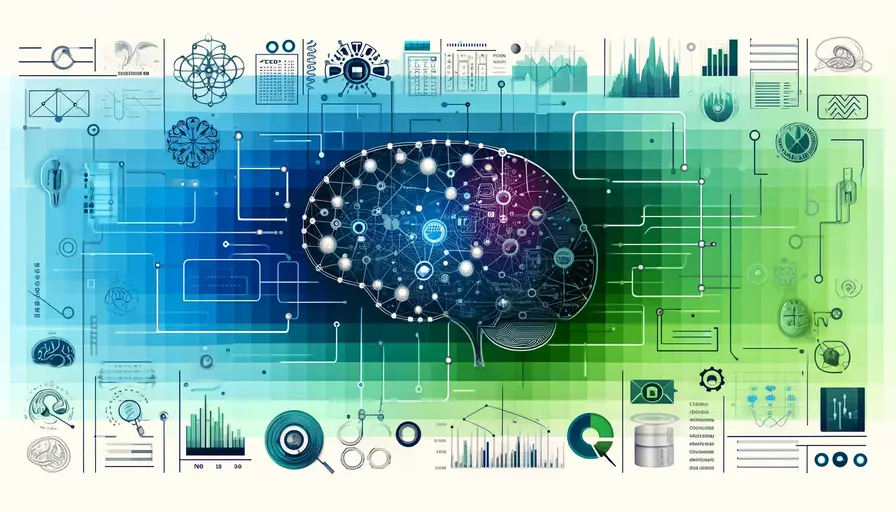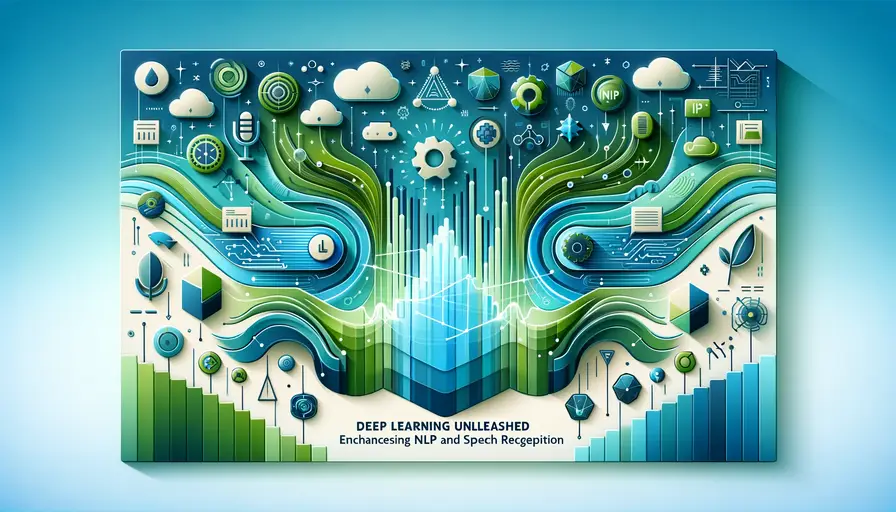
Deep Learning with R: Benefits and Limitations Reviewed

- Accurate Predictions
- Extracting Complex Patterns
- Libraries and Tools
- Applications in Various Tasks
- Creating Deep Neural Networks
- Flexibility and Versatility
- Computational Requirements
- Time and Resources
- Overfitting Concerns
- Interpretation Challenges
- Using a Large Labeled Dataset
- Employing Deep Learning Techniques
- Data Preprocessing Steps
- Feature Engineering
- Evaluating the Model
- Implementing Cross-Validation
- Analyzing Results
- Regular Updates
- User Feedback
- Ensemble Methods
- Applying Transfer Learning
- Feedback Loop for Improvement
- Using APIs and Cloud Services
Accurate Predictions
Deep learning with R allows for more accurate predictions in various domains by leveraging the power of complex neural networks. These networks can model intricate relationships within data, leading to highly accurate forecasting and classification outcomes. For example, in finance, deep learning models can predict stock prices and detect fraudulent activities with greater precision than traditional methods.
Another significant advantage is the ability to handle unstructured data, such as text, images, and videos. This capability makes R a powerful tool for domains like healthcare, where image recognition can assist in diagnosing diseases, or in marketing, where sentiment analysis can gauge customer opinions from social media.
Extracting Complex Patterns
Deep learning in R enables the extraction of complex patterns and features from large datasets. This feature is crucial for fields like genomics, where understanding the intricate patterns within genetic data can lead to breakthroughs in personalized medicine. The ability to uncover hidden structures within vast amounts of data sets R apart from simpler analytical tools.
Moreover, R's extensive support for statistical analysis and data manipulation enhances its capability to preprocess and clean data before applying deep learning models. This preprocessing step is vital for ensuring the accuracy and reliability of the models, ultimately leading to better insights and decisions.
 Deep Unsupervised Learning and Nonequilibrium Thermodynamics
Deep Unsupervised Learning and Nonequilibrium ThermodynamicsLibraries and Tools
R provides a wide range of libraries and tools for implementing deep learning models. Notable packages include TensorFlow, Keras, and mxnet, which offer comprehensive interfaces for building and training neural networks. These libraries simplify the implementation of complex architectures, allowing researchers and practitioners to focus on refining their models rather than dealing with low-level computations.
Benefits of Using R
One of the key benefits of using R for deep learning is its integration with other statistical and graphical capabilities. This integration allows for seamless data analysis, visualization, and model evaluation within a single environment. Additionally, R's active community and extensive documentation provide ample resources for learning and troubleshooting.
Limitations of Using R
However, there are also limitations of using R for deep learning. R can be slower compared to other languages like Python, especially for large-scale computations. The performance gap can be significant when dealing with massive datasets or highly complex models. Additionally, while R's deep learning libraries are powerful, they might not be as mature or widely used as their Python counterparts.
Applications in Various Tasks
Deep learning in R can be used for image recognition, natural language processing (NLP), and other tasks. In image recognition, R can classify and detect objects within images, enabling applications like facial recognition and autonomous driving. For NLP, R can process and analyze large volumes of text data, extracting meaningful insights and automating tasks like translation and summarization.
 Calculating Parameters in a Deep Learning Model
Calculating Parameters in a Deep Learning ModelThese applications demonstrate the versatility of R in handling diverse types of data and problems. By leveraging deep learning, R can significantly enhance the capabilities of traditional data analysis methods, opening new avenues for research and development.
Creating Deep Neural Networks
Deep learning with R allows for the creation of deep neural networks with multiple layers. These layers enable the model to learn hierarchical representations of data, capturing both low-level features and high-level abstractions. This capability is particularly useful in tasks like speech recognition, where understanding the nuances of spoken language requires multiple levels of processing.
R's flexible syntax and comprehensive libraries make it easy to experiment with different network architectures. Users can customize their models to suit specific needs, adjusting parameters and structures to optimize performance. This flexibility is a significant advantage for researchers and developers exploring new deep learning techniques.
Flexibility and Versatility
R's flexibility and versatility make it suitable for experimenting with different architectures and algorithms. Users can easily switch between various types of neural networks, such as convolutional neural networks (CNNs) for image data or recurrent neural networks (RNNs) for sequential data. This adaptability allows for rapid prototyping and testing of new ideas.
 Can Deep Learning Neural Networks Match Human Learning Abilities?
Can Deep Learning Neural Networks Match Human Learning Abilities?Furthermore, R's compatibility with other programming languages and tools enhances its versatility. Users can integrate R with Python, Java, or C++ to leverage specialized libraries and frameworks, expanding the scope of their deep learning projects. This interoperability ensures that R remains a valuable tool in the data scientist's toolkit.
Computational Requirements
Deep learning in R can be computationally intensive and require large amounts of data. Training deep neural networks involves numerous mathematical operations, which can be resource-demanding. High-performance hardware, such as GPUs, can significantly speed up the training process, but not all users have access to such resources.
The need for extensive computational power can be a barrier for some users, especially those working on large-scale projects. It's essential to consider these requirements when planning deep learning tasks in R, ensuring that the necessary infrastructure is in place to support the models.
Time and Resources
Training and fine-tuning models in R may require significant computational resources and time. Developing a deep learning model involves iterative processes of adjusting parameters, validating results, and refining the architecture. This iterative nature can be time-consuming, particularly for complex models or large datasets.
 Harnessing Deep Learning AI for Positive Transformation
Harnessing Deep Learning AI for Positive TransformationBenefits of Deep Learning with R
Despite these challenges, the benefits of using deep learning with R are substantial. R's rich ecosystem of packages and strong support for statistical analysis make it a powerful tool for building and deploying machine learning models. The ability to handle a wide range of data types and integrate with other tools adds to its appeal.
Limitations of Deep Learning with R
However, the limitations of using R should not be overlooked. The performance constraints and computational demands can pose significant challenges, especially for users without access to advanced hardware. Additionally, while R's deep learning libraries are robust, they may lack some features available in more specialized frameworks like TensorFlow or PyTorch.
Overfitting Concerns
Deep learning models in R may suffer from overfitting if not properly regularized. Overfitting occurs when a model learns the training data too well, including its noise and outliers, leading to poor generalization on new data. Regularization techniques, such as dropout or L2 regularization, can help mitigate this issue by preventing the model from becoming too complex.
Implementing these techniques is crucial for developing robust models that perform well on unseen data. Regularization adds a layer of complexity to model training but is necessary to ensure that the model remains generalizable and effective in real-world applications.
 Optimal Strategies for Training Neural Networks
Optimal Strategies for Training Neural NetworksInterpretation Challenges
Interpreting and explaining the results of deep learning models in R can be challenging. Deep learning models, especially those with many layers, are often considered "black boxes" because their internal workings are not easily understood. This lack of interpretability can be a drawback in fields where understanding the decision-making process is crucial.
Efforts are being made to develop methods for explaining deep learning models, such as SHAP (SHapley Additive exPlanations) values or LIME (Local Interpretable Model-agnostic Explanations). These tools can provide insights into how the model makes decisions, helping to build trust and transparency in the results.
Using a Large Labeled Dataset
Using a large labeled dataset is essential for training effective machine learning models in R. The quality and quantity of data significantly impact the performance and accuracy of deep learning models. A large dataset provides more examples for the model to learn from, improving its ability to generalize to new data.
Collecting and curating such datasets can be time-consuming and resource-intensive. It's important to ensure that the data is representative of the problem domain and that it covers a wide range of scenarios. Properly labeled and diverse datasets are the foundation of successful deep learning projects.
 Non-Equilibrium Thermodynamics in Deep Unsupervised Learning
Non-Equilibrium Thermodynamics in Deep Unsupervised LearningEmploying Deep Learning Techniques
Employing deep learning techniques in R can greatly enhance model accuracy. Techniques such as convolutional neural networks (CNNs) for image data or recurrent neural networks (RNNs) for sequential data are designed to capture complex patterns and relationships within the data. These techniques leverage the power of deep learning to improve predictive performance.
Using these advanced techniques requires a good understanding of deep learning principles and experience with R's deep learning libraries. Practitioners need to experiment with different architectures and parameters to find the optimal configuration for their specific problem. The ability to apply deep learning techniques effectively is a valuable skill in the data science field.
Data Preprocessing Steps
Preprocessing the data is a crucial step in any deep learning project. It involves removing irrelevant information, standardizing formats, and handling missing values. Clean and well-prepared data ensures that the deep learning model can learn effectively and make accurate predictions.
Data preprocessing can include normalization, encoding categorical variables, and splitting the data into training and test sets. Each step is essential for preparing the data in a format suitable for deep learning. Proper preprocessing leads to more reliable and interpretable results.
Feature Engineering
Feature engineering is another critical step to enhance model performance. This process involves creating new features from the existing data to better represent the underlying patterns. For example, in a dataset containing text, features could be created based on word frequencies or sentiment scores.
Length of the Name
Considering the length of the name as a feature can provide valuable insights. Longer names might have different characteristics compared to shorter ones, influencing the model's predictions. Analyzing the distribution and impact of name length can help refine the model.
Character and Pattern Analysis
Character and pattern analysis can also enhance the model. By examining the frequency of certain characters or patterns within names, the model can identify trends and make more informed predictions. This analysis adds another layer of depth to the feature engineering process.
Evaluating the Model
Implementing a robust evaluation framework is essential for measuring the model's accuracy. This framework involves defining evaluation metrics, such as accuracy, precision, recall, and F1-score, to assess the model's performance comprehensively. Using these metrics helps identify strengths and weaknesses in the model.
Define Evaluation Metrics
Defining the evaluation metrics is the first step in the evaluation process. Choose metrics that are appropriate for the problem at hand and that
provide meaningful insights into the model's performance. For classification tasks, metrics like accuracy and precision are commonly used.
Split the Dataset
Splitting the dataset into training and test sets is crucial for evaluating the model. The training set is used to train the model, while the test set is used to assess its performance. This split helps ensure that the model is evaluated on data it has not seen before, providing a realistic measure of its accuracy.
Implementing Cross-Validation
Implementing cross-validation is a key technique for evaluating the model. Cross-validation involves dividing the data into multiple subsets and training the model on each subset while using the remaining data for validation. This process helps ensure that the model's performance is consistent across different data splits.
Cross-Validation Steps
The first step is to split the data into k subsets. Then, train the model on k-1 subsets and validate it on the remaining subset. Repeat this process k times, each time using a different subset for validation. Average the results to obtain a final performance measure.
Evaluate the Model
Evaluating the model with cross-validation provides a more comprehensive assessment of its performance. By using multiple validation sets, cross-validation reduces the risk of overfitting and ensures that the model generalizes well to new data. This technique is widely used in machine learning to validate model accuracy.
Analyzing Results
Analyzing the results of the model evaluation is crucial for understanding its strengths and weaknesses. Examine the evaluation metrics to identify areas where the model performs well and areas that need improvement. Use this analysis to guide further model refinement.
Iterate and Improve
Based on the analysis of the results, iterate and improve the model. Adjust parameters, try different architectures, and refine the feature engineering process. Continuous iteration and improvement are key to developing a robust and accurate deep learning model.
Regular Updates
Regularly update the model with new data to ensure continuous learning and improvement. As new data becomes available, incorporate it into the training process to keep the model current and accurate. Regular updates help the model adapt to changing conditions and improve over time.
Periodic Updates
Implement periodic updates to the model. Schedule regular intervals for retraining the model with new data, ensuring that it remains accurate and up-to-date. This practice helps maintain the model's performance and relevance.
Real-Time Updates
For applications that require real-time updates, set up automated processes to continuously feed new data into the model. Real-time updates ensure that the model responds to the latest information and maintains high accuracy. This approach is essential for dynamic environments where conditions change rapidly.
User Feedback
Collecting user feedback is vital for improving the model over time. Users can provide valuable insights into the model's performance and suggest areas for improvement. Incorporate this feedback into the model refinement process to enhance its accuracy and reliability.
Feedback Loop
Establish a feedback loop to gather and analyze user feedback. Use this information to make iterative improvements to the model, ensuring that it meets user needs and expectations. A robust feedback loop is essential for maintaining a high-quality machine learning model.
Ensemble Methods
Utilize ensemble methods to combine multiple models and improve classification accuracy. Ensemble methods, such as bagging and boosting, aggregate the predictions of several models to create a more robust and accurate final prediction.
What Are Ensemble Methods?
Ensemble methods involve combining multiple models to improve performance. By aggregating the predictions of different models, ensemble methods reduce the risk of overfitting and increase accuracy. This approach leverages the strengths of various models to achieve better results.
Advantages of Ensemble Methods
The advantages of ensemble methods include improved accuracy, reduced overfitting, and enhanced robustness. By combining the strengths of multiple models, ensemble methods create a more reliable and accurate predictive system. This approach is widely used in machine learning to boost model performance.
Applying Transfer Learning
Transfer learning leverages pre-trained models to classify new data. By using models that have already been trained on large datasets, transfer learning reduces the amount of data and computational resources needed for training new models. This technique is particularly useful for tasks with limited data.
What Is Transfer Learning?
Transfer learning involves using pre-trained models as a starting point for new tasks. These models have already learned features from a large dataset, which can be applied to new, related tasks. This approach accelerates the training process and improves accuracy.
Benefits of Transfer Learning
The benefits of transfer learning include faster training times, improved accuracy, and reduced data requirements. By leveraging pre-trained models, transfer learning allows practitioners to achieve high performance even with limited data. This technique is especially valuable in fields with scarce labeled data.
Feedback Loop for Improvement
Implementing a feedback loop helps collect user feedback and improve the model over time. Continuous feedback from users provides insights into the model's performance and areas for enhancement. Use this feedback to refine and update the model regularly.
Collecting Feedback
Collect user feedback through surveys, usage data, and direct interactions. Analyze this feedback to identify common issues and areas for improvement. Regularly updating the model based on user feedback ensures it remains relevant and accurate.
Iterative Improvements
Use the feedback loop to make iterative improvements to the model. Continuously refine the model based on user insights and performance metrics. This approach ensures that the model evolves and improves over time, maintaining high accuracy and reliability.
Using APIs and Cloud Services
Utilize APIs and cloud-based services for easy integration and scalability. These services provide robust infrastructure and tools for deploying and managing machine learning models. They simplify the process of integrating machine learning into applications and ensure scalability.
Benefits of APIs
APIs offer numerous benefits, including ease of integration, scalability, and access to powerful machine learning tools. By using APIs, developers can quickly add machine learning capabilities to their applications without needing extensive expertise in machine learning.
Cloud-Based Services
Cloud-based services provide scalable and reliable infrastructure for deploying machine learning models. They offer robust computing resources and tools for managing models, making it easy to scale and maintain machine learning applications. Using cloud services ensures that models can handle large volumes of data and traffic.
If you want to read more articles similar to Deep Learning with R: Benefits and Limitations Reviewed, you can visit the Deep Learning category.






You Must Read